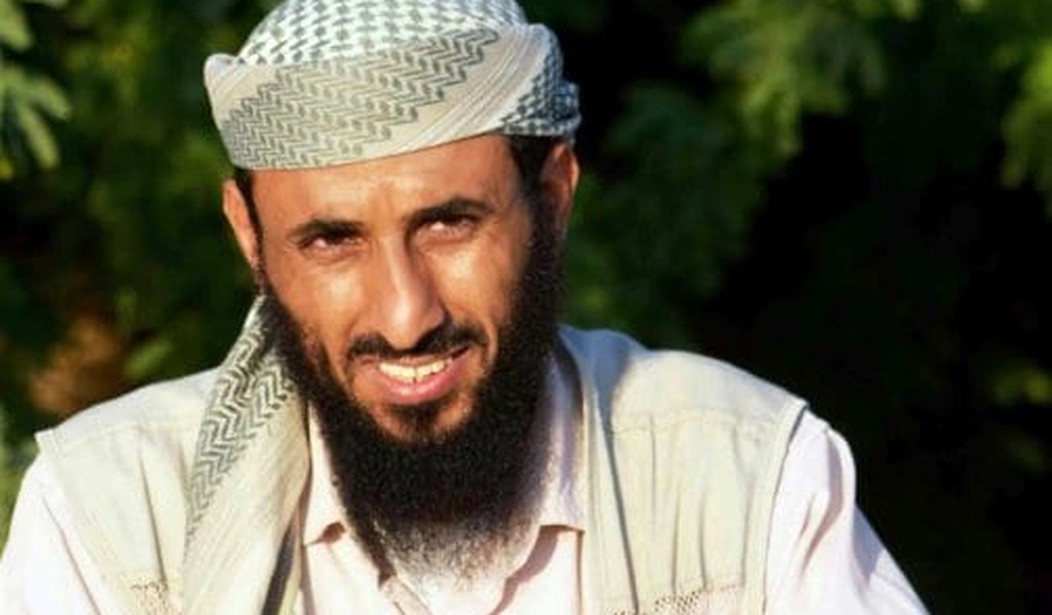WASHINGTON — The Obama administration often contends that al-Qaeda is “on the run,” basing this assertion on the “decimation” of its core.
“Today, the core of al-Qaeda in Afghanistan and Pakistan is on a path to defeat. Their remaining operatives spend more time thinking about their own safety than plotting against us. They did not direct the attacks in Benghazi or Boston. They have not carried out a successful attack on our homeland since 9/11,” President Obama declared last May at the National Defense University.
On Aug. 7, Obama told Marines at Camp Pendleton that “al-Qaeda’s top ranks have been hammered.”
“The core of al-Qaeda, in Afghanistan and Pakistan, is on the way to defeat,” he added.
Two days later, when questioned about this in a press conference at the White House, the president reiterated that “core al-Qaeda is on its heels, has been decimated.”
“So it’s entirely consistent to say that this tightly organized and relatively centralized al-Qaeda that attacked us on 9/11 has been broken apart and is very weak and does not have a lot of operational capacity, and to say we still have these regional organizations like AQAP that can pose a threat, that can drive potentially a truck bomb into an embassy wall and can kill some people,” he maintained.
And while Obama admitted in his State of the Union address that the “threat has evolved” with the growth of affiliates, he maintained “we have put al-Qaeda’s core leadership on a path to defeat.”
But a recent promotion in the terrorist organization proves that the offshoots dismissed as “affiliates” are critical to al-Qaeda’s grand scheme for sustained growth.
Al-Qaeda chief Ayman al-Zawahiri had to fill his old position as No. 2 in the organization after Abu Yahya Al Libi was killed in a 2012 drone strike.
His choice? The leader of al-Qaeda in the Arabian Peninsula.
CIA Director John Brennan confirmed the hire when answering a question earlier this month at the Council on Foreign Relations.
“You know, there’s al-Qaeda core, you know, bin Laden and Zawahiri and those that are around, you know, the core of al-Qaeda in South Asia. There are those groups, like al-Qaeda in the Arabian Peninsula, that are clearly affiliated. The head of al-Qaeda in the Arabian Peninsula, Wuhayshi, is the number two in al-Qaida core in al-Qaeda central,” Brennan said.
“…Al-Qaeda has metastasized, and — which makes it all the more challenging, because a lot of these groups have local agendas, but also are being exploited by al-Qaeda core for more sort of violent global jihadist purposes.”
The hire reportedly took place last summer, around the time when Obama talked about a defeated core al-Qaeda in August.
Nasir al-Wuhayshi is, according to UAE newspaper The National, in his mid-30s and doesn’t clear 5 feet in height. But he’s got jihad in his blood: the Yemeni attended religious schools, went to Afghanistan, became bin Laden’s personal secretary, oversaw al-Qaeda training camps, and hid in the caves of Tora Bora with his boss. When bin Laden went into hiding in the Abbottabad compound, Wuhayshi was one of the few to know his whereabouts.
He was held by the Yemenis for a few years before a prison escape, started a Yemen chapter of al-Qaeda, then announced the launch of AQAP to merge with Saudi extremist groups in a 2009 press conference.
Despite Obama’s drone strikes on Yemeni targets, AQAP has flourished under Wuhayshi’s leadership and looked for new ways to attack, including the underwear bomb aboard a 2009 Detroit-bound flight that made it past security. AQAP is also behind the slick English-language magazine Inspire, which encourages “open-source jihad” by lone wolves following the tutelage of al-Qaeda’s long-distance teachings. It was from this magazine that the Boston Marathon bombers found their deadly explosives recipes. Wuhayshi has deemed Western jihadists to be even more valuable than Middle Eastern ones because of their proximity to the “enemy.”
“Wherever there are mujaheddin, there is danger awaiting the disbelievers,” Wuhayshi said in 2010. “The mujaheddin are one body and if one of them is somewhere you would find fear and terror spreading in that place.”
Days before Obama’s declaration of a defeated al-Qaeda core to the Camp Pendleton Marines, Wuhayshi and Zawahiri jumped on a conference call with more than 20 leaders of affiliates including Boko Haram in Nigeria, the Pakistani Taliban, al-Qaeda in Iraq, al-Qaeda in the Islamic Maghreb, and new affiliates including al-Qaeda in the Sinai Peninsula.
Wuhayshi’s new title is general manager for international operations, giving the jihadi with a reputation for ruthlessness and respect from the ranks as a close associate of bin Laden a green light to order terror attacks at will.
Earlier this month, Nigerian media reported that al-Qaeda had assumed control of the brutal Boko Haram terror group, known for beheading Christians with chainsaws at roadblocks and kidnapping the Muslims who pass through for forced conscription. The White House only designated Boko Haram, founded in 2009, as a terrorist group in November.
Al-Qaeda in the Islamic Maghreb has been bringing Boko Haram and Somalia’s Al-Shabaab together to train in lawless areas of North Africa.
War-on-terror-minded members of Congress have long warned about al-Qaeda’s metastasization and were especially alarmed when al-Qaeda took Fallujah. Yet in a January New Yorker interview, Obama dismissed the current growth as junior varsity players trying to live up to the big boys. “The analogy we use around here sometimes, and I think is accurate, is if a jayvee team puts on Lakers uniforms that doesn’t make them Kobe Bryant,” he said. “I think there is a distinction between the capacity and reach of a bin Laden and a network that is actively planning major terrorist plots against the homeland versus jihadists who are engaged in various local power struggles and disputes, often sectarian.”
Last month, the House Armed Services Committee heard that 2012 was the most active year of terrorism in terms of incidents — more than 6,800 — and deaths — more than 11,000 — since record keeping began.
“These have been the most lethal two years in the history of modern terrorism, and al‐Qaeda remains at the historical, organizational, and ideological center of the most dangerous terrorist threats of our time,” William Braniff, executive director of the National Consortium for the Study of Terrorism and Responses, told the panel.
“Conventional wisdom holds that al-Qaeda’s senior leadership has been decimated by Osama bin Laden’s death and the drone campaign that the U.S. has been waging….However, I would question this conventional wisdom for two reasons,” said Daveed Gartenstein-Ross, senior fellow at the Foundation for the Defense of Democracies. “First, the available evidence suggests that leadership attrition does not degrade groups like al-Qaeda to the extent that is often believed. Second, there is specific evidence that AQSL (al-Qaeda’s senior leadership) retains capabilities despite this attrition.”
Zawahiri, 62, continues to issue his statements, much like bin Laden did while Zawahiri was tending to the nuts and bolts of al-Qaeda. Yet a young, fanatical, smart jihdadist is not only calling the shots but using skills honed by building a successful al-Qaeda franchise to bring together like-minded groups and al-Qaeda offshoots for common missions on a global scale.
It is the new core of al-Qaeda — a powerful network that bin Laden envisioned as his group’s ultimate construction.
“The Americans killed the Sheikh, but have they killed the faith of the Sheikh, his methodology and his call, and the combat morale of the Ummah the Sheikh has revived?” Wuhayshi wrote after bin Laden’s death.
‘The fight between us and you was not led by Osama alone. What is coming is greater and worse, and what you will be facing is more intense and harmful.”









Join the conversation as a VIP Member